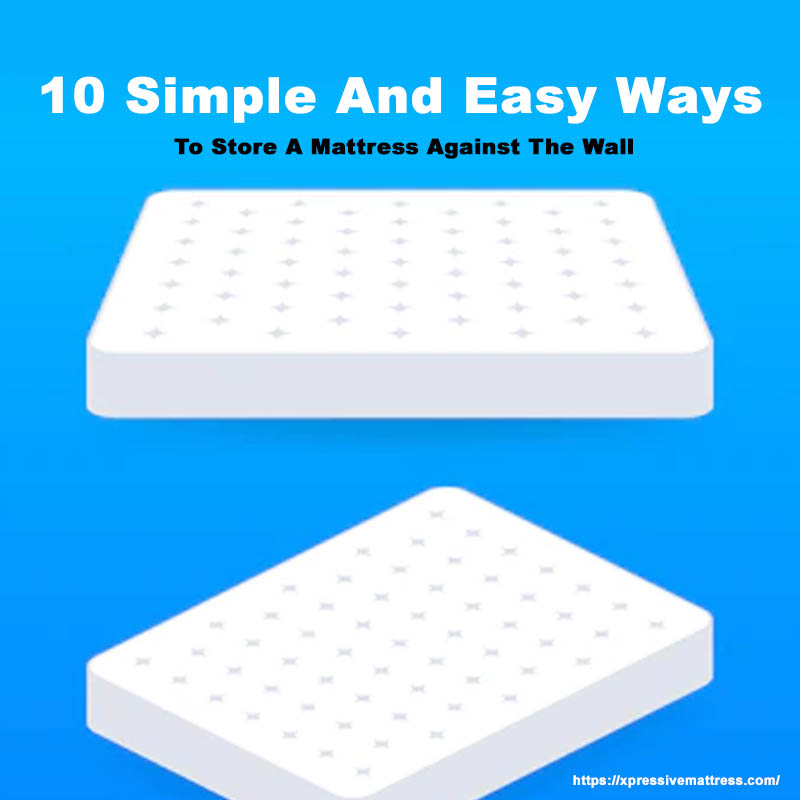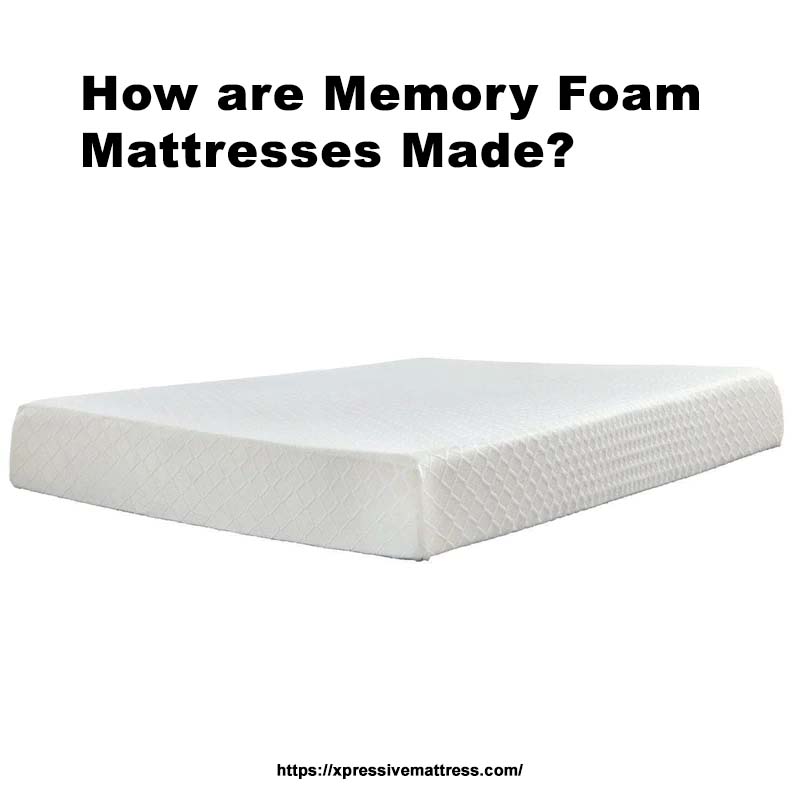Making a bad mattress better can be tricky, but it doesn’t have to be impossible!
You can improve your bed’s comfort in several ways without buying an entirely new one.
Here’s how:
- Add extra padding or layers.
- Use a mattress pad for added cushioning and support.
- Rotate and flip your mattress regularly.
- Invest in quality sheets that will help keep you cool at night.
With these simple steps, even the worst mattresses can become more comfortable.
That makes them much easier on both body and wallet!
Investing in good-quality pillows is also essential as they provide additional neck support while sleeping, which helps reduce back pain caused by poor posture during sleep.
Finally, adding some scented candles around the bedroom creates a calming atmosphere perfect for restful nights’ sleep – something we all need after dealing with uncomfortable beds!
What Are The Common Problems With A Bad Mattress?
A bad mattress can cause a lot of problems.
- It may be uncomfortable, lumpy, or too soft.
- It may even lead to back pain!
- Not providing enough support for your body and spine.
Here are some common issues with a bad mattress:
- Uncomfortable sleeping surface – the material used in mattresses is often hard and unsupportive, which makes them difficult to sleep on.
- Poor spinal alignment – if you don’t have proper support from your mattress, this can affect how well-aligned your spine is when lying down. It can lead to aches and pains throughout the day and poor posture over time.
- Lack of breathability – many mattresses trap heat due to their materials making them hot during summer months leading to an unpleasant night’s rest!
- Allergens and dust mites – old or worn-out mattresses tend to accumulate allergens such as dust mites that trigger allergies in people with asthma or other respiratory conditions like hay fever.
These should be replaced regularly, so they do not become breeding grounds for these harmful particles.
We must take care of our bodies by investing in good quality beds/mattresses because, without good restful nights’ sleep, we cannot function properly at work nor enjoy life fully!
How Can You Identify The Source Of Discomfort In Your Mattress?
Identifying the source of discomfort in your mattress can be tricky.
Here are some tips to help you out:
- Check for lumps or bumps – these could indicate a broken spring, worn-out foam layers, or an uneven surface.
- Look at how old it is – mattresses typically last between 7 and 10 years before they need replacing.
- Test different areas with pressure – if one area feels softer, this may mean something wrong inside the mattress, like sagging support coils.
- Suppose you wake up feeling stiffer than usual. In that case, this might suggest that your current bed isn’t providing enough comfort! Please pay attention to any aches and pains when sleeping on it.
- Finally, ensure all parts of the frame are secure. Hence, nothing shifts during sleep which would cause further disruption throughout the night hours too!
What Are Some Temporary Solutions To Make A Bad Mattress Bearable?
If you have a bad mattress, some temporary solutions can make it more bearable.
- Try adding an extra layer on tops, such as a memory foam topper or egg crate pad. It will help provide additional cushioning and support for your body while sleeping.
- Use pillows strategically: place them under the areas where you feel pressure points when lying down so they act like cushions between your body and the bed surface.
- Rotate or flip over the mattress every few months to even wear-and-tear spots if you turn it end-to-end once yearly too!
- Finally, invest in good quality sheets – cotton is best because its breathability helps keep temperatures regulated throughout the nighttime. That makes sleep much easier (especially during hot summer nights).
These simple steps should help improve comfort levels until you can purchase new mattresses!
What Are Some Inexpensive Ways To Improve A Bad Mattress?
There are many inexpensive ways to improve a bad mattress.
- You can add an extra comfort layer with a mattress pad or topper. These come in various materials, such as memory foam and latex. They cushion the body while protecting your bed from dirt and dust mites.
- Use pillows strategically: place one under your head if it’s too soft. Two between your knees if there is not enough support around them. Three at the foot of the bed when sleeping on your back so that your hips don’t sink into the mattress too much!
- Rotate or flip over mattresses every few months – this helps even out wear-and-tear spots which may have developed due to regular usage patterns (such as always lying in the same spot).
- Invest in good quality sheets – cotton ones will help keep air circulating better than synthetic fabrics as polyester does!
All these tips should make any old uncomfortable mattress feel more comfortable without breaking the bank account balance.
What Are Some Long-Term Solutions For A Bad Mattress?
Long-term solutions for a bad mattress include replacing it, adding layers of padding or toppers, and rotating the mattress.
Replacing your old mattress with a new one is often the best solution, as mattresses should be replaced every 8 years on average.
However, this can become expensive quickly.
Adding extra cushioning in the form of memory foam pads or egg crate style toppers are also great options that will help extend its life while providing additional comfort at night.
Lastly, regularly flipping and rotating your existing bedding helps evenly distribute wear over time. So you don’t sleep in just one spot all year round!
It’s important to remember that no matter what long-term solution you choose.
That is true, Whether it’s buying a brand new model or simply investing some money into an upgrade like added padding.
Taking care of your current bedding could save you from replacing it sooner than expected down the road!
How Can You Properly Maintain Your Mattress To Prevent It From Becoming Bad Again?
Maintaining your mattress is important to ensure it lasts for a long time.
Here are some tips on how you can properly maintain your mattress:
- Vacuum the surface of the mattress regularly – this will help remove dust and dirt that accumulates over time.
- Rotate or flip the mattress every few months – flipping helps even wear and tear while rotating prevents sagging in one area.
- Use a waterproof protector – these protectors keep liquids from seeping into the foam layers and causing damage.
- Avoid eating/drinking in bed – crumbs attract pests like ants and mites, which could cause permanent stains if not removed quickly enough. Additionally, spills should be cleaned immediately with a mild detergent solution to avoid leaving any residue.
- Keep pets off furniture – pet fur can get embedded deep within fabric fibers, making them difficult to clean without professional assistance. Also, avoid letting animals sleep directly on top of mattresses since their claws may tear through the material easily.
- Ensure adequate ventilation around beds by keeping windows open during summertime. It allows air circulation throughout the room, preventing mold growth due to high humidity levels inside the bedroom!
What Are Some Tips For Selecting A Replacement Mattress, If Necessary?
When selecting a replacement mattress, there are several important factors to consider.
- Comfort – make sure the new mattress fits your body type and sleeping style.
- Look for quality materials that will last – Memory foam or latex mattresses are more durable than traditional innerspring models.
- Pay attention to size – measure both the bed frame and any existing sheets you plan on using with it before making a purchase!
- Research customer reviews online to understand how satisfied people have been with their purchases from different brands/retailers.
Here are some tips for finding the perfect fit:
- Try out multiple beds at stores if possible – this way, you’ll know what feels best against your skin and spine alignment
- Look into adjustable bases, which allow users to customize firmness levels according to preference
- Consider buying organic cotton covers since they’re breathable and hypoallergenic
- Ensure warranty information is included when purchasing (most companies offer 10-year warranties). With these helpful tips in mind, choosing a replacement mattress should be much easier!
In Conclusion: How To Make A Bad Mattress Better?
In conclusion, making a bad mattress better is possible.
It requires effort and creativity, but the results can be worth it!
There are several ways to do this: adding an extra layer of padding or foam.
Using a mattress pad for added comfort.
Flipping your mattress regularly so that all sides get equal wear and tear over time.
Replacing old mattresses with new ones when necessary.
If you take care of your bedding properly, invest in quality materials and use good sleep hygiene practices.
You should have no problem getting comfortable, restful nights on any surface – even one considered ‘bad.’



